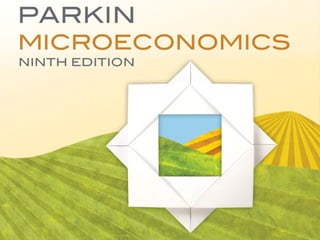
Why Food Costs Rise and Trade Benefits
- 3. Why does food cost much more today than it did a few years ago? One reason is that we now use part of our corn crop to produce ethanol, a clean biofuel substitute for gasoline. Another reason is that drought in some parts of the world has decreased global grain production. We use an economic model—the production possibilities frontier—to learn why ethanol production and drought have increased the cost of producing food. We also use this model to study how we can expand our production possibilities; how we gain by trading with others; and why the social institutions have evolved.
- 30. Gains from Trade Liz's opportunity cost of producing 1 salad is 1 smoothie. Liz’s customers buy salads and smoothies in equal number, so she produces 15 smoothies and 15 salads an hour. Liz's Smoothie Bar In an hour, Liz can produce 30 smoothies or 30 salads. Liz's opportunity cost of producing 1 smoothie is 1 salad.
- 31. Gains from Trade Joe's opportunity cost of producing 1 smoothie is 5 salads. Joe's opportunity cost of producing 1 salad is 1/5 smoothie. Joe's Smoothie Bar In an hour, Joe can produce 6 smoothies or 30 salads. Joe’s spend 10 minutes making salads and 50 minutes making smoothies, so he produces 5 smoothies and 5 salads an hour .